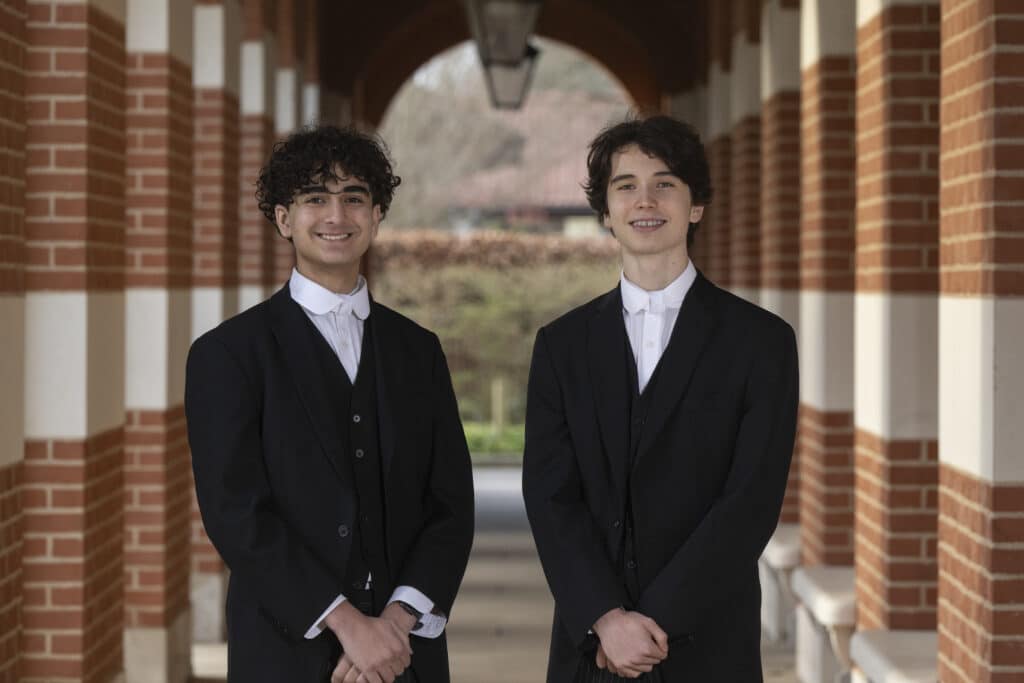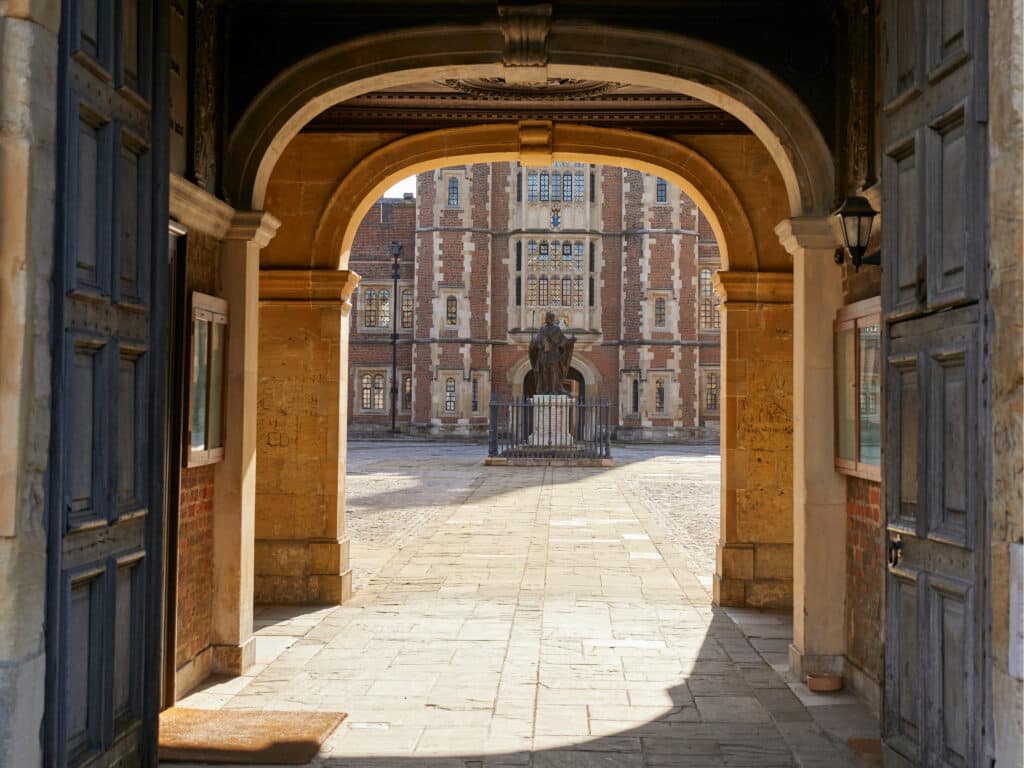Since 2000 we have seen a need, if not a demand, for school collaboration for a multitude of reasons (Lucas et al., 2017). For example, in 2019 our closest neighbour, Slough and Eton Business & Enterprise College, brought a failing secondary school into its Multi Academy Trust, allocating significant amounts of leadership and administrative time to its improvement. This has become standard practice in the maintained sector, supported by the network of Regional Schools Commissioners.
However, the direct impact of such collaborations are sparsely documented, although there are some indirect results discussed in research such as ‘positive influence of inter-school collaboration on teachers and teaching, with practitioners reporting an increased motivation to engage in professional dialogue with their colleagues, knowledge mobilisation and a general shift towards more learning-oriented and enquiry-based cultures in schools that have been collaborating’ (Stoll, 2015). As Armstrong (2015) suggests, the one thing we are sure of is that there is the appetite for these collaborations.
Even though only a decade ago there was some reluctance of independent school involvement in those partnership, with the misguided rhetoric of independent schools propping up the state sector as suggested by some, the level of debate and analysis in the independent sector has made very considerable strides since then. A successful example we are proud to lead is the cross-sector school collaboration involving Holyport College, the London Academy of Excellence and the Tony Little Centre. It is also now common practice that independent schools appoint Outreach Directors, often at senior management level: another proof that these collaborations are taken seriously. This also fulfils one of the conditions often cited as important for those collaborations to succeed: namely, robust structures and processes (Chapman et al., 2009).
Diligent readers of this journal may remember ‘All Together Now’ which came out last year, laying out a roadmap for schools to get involved in establishing outstanding collaborative music projects. This was a significant publication which had strong impact across the sector, with a number of schools launching new music projects in response to it. However, perhaps the most important outcome was in securing funding from the Independent Schools Council for additional projects of similar ilk, launched out of seminars held at the Tony Little Centre.
The Department for Education has acknowledged that independent schools alongside universities have a wealth of knowledge which could be utilised to open up access for pupils from disadvantaged backgrounds (DfE, 2018). It was, therefore, self-evident that our follow-up project should look at ways in which independent schools are supporting disadvantaged students in achieving places at the world’s most outstanding universities. We believe that such a project will have a strong impact on the lives on those pupils who need this support and will shift the narrative to one which advocates state-independent schools partnerships in widening access and participation. We held our first seminar on May 1 2019 in the Tony Little Centre, attended by 17 partnerships co-ordinators from a range of different schools, independent and state, single sex and co-ed, day and boarding. These were some of the examples and insights which shaped our discussions:
- Lumina is an annual summer school run by Harrow School, which has grown from 40 students in 2014 to 200 students this year. They come from 40 schools, and the intervention organised by Lumina aims to make sure that pupils understand the process and targeting of an application to an elite university as well as students from independent schools do. 141 Lumina students, the vast majority of whom are highly disadvantaged, achieved places at Russell Group Universities last year. It costs £40,000 to run, the same cost as a single full fee bursary, and would be easily replicable in any other city or borough.
- Kickstart Medicine is a targeted intervention run by Immanuel School in Hertfordshire. The driver of this programme, Liam Suter, had the advantage that he was taking over partnership work at a school that had no institutional history of collaboration, so he could start everything from scratch. He went back to first principles, deriving a Theory of Change about the most effective way in which his programme could support Medical School applications. This gave rise to a sustained programme involving over 120 hours of interventions. Over 20 students from the partnership have made it to medical degrees in the first year of operation, and each of these is tied to a rigorous analysis of that initial Theory of Change.
- We established that the most effective interventions are proactive rather than reactive, derived from a plan, rooted in evidence and seek to make a systematic response to a problem, rather than from an ad hoc request to help an individual school or student. Independent schools have the opportunity to be evidence-driven in working out how to help; and the sharing of costed, assessed models such as the two above, that are easily scalable and replicable in different parts of the country, could lead to a step change in what independent schools are doing in this area.
- What will make the most difference is if this can be done in concert with the outreach programmes being led by the most selective universities. Oxford alone spent over £14 million on outreach this year, and the sophistication of the analysis and intervention being made is increasing year on year. We need to offer our help to that effort. In some places, such as Colfe’s in South East London or Norwich School in Norfolk, independent schools are working with individual colleges to provide Oxbridge hubs, bringing students in from a whole region or borough to provide accessibility services. These models, again, are relatively easy to replicate.
- Finally, it became clear to us during the seminar that the best interventions take place within the context of a school partnership that already covers other curriculum projects, and within which, therefore, significant trust has already been built up. Along with eight other local schools, Eton will be launching a new model called the Thames Valley Learning Partnership over the course of the next year which will provide just such a structure.
Over the coming months I will be co-writing a publication developing many of the ideas from the seminar and also showcasing some of the best case studies from across the sector. I am really pleased that Anushka Chakravarty, who leads university admissions at the London Academy of Excellence, will be co-writing this publication: Anushka is determined that we will match up the experience and perspective of disadvantaged students with the projects being developed by independent schools. If you’d like to know more, or to receive the publication when produced, please email Tom Arbuthnott.
References
Armstrong, P. (2015). Effective school partnerships and collaboration for school improvement: a review of the evidence. London: Department for Education (DfE).
Chapman, C., Muijs, M., Sammons, P., Armstrong, P. and Collins, A. (2009). The impact of federations on student outcomes. A report prepared for the National College of Leadership for Schools and Children’s Services. Nottingham: National College for School Leadership (NCSL).
Department for Education (2018). Schools that work for everyone. https://assets.publishing.service.gov.uk/government/uploads/system/uploads/attachment_data/file/706243/Schools_that_work_for_everyone- Government_consultation_response.pdf [accessed 19.5.2019].
Stoll, L. (2015). Three greats for a self- improving school system: pedagogy, professional development and leadership: executive summary (Teaching schools R&D network national themes project 2012-14). London: Department for Education (DfE).
Lucas, B., Stoll, L., Greany, T., Tsakalaki, A. and Nelson, R. (2017). Independent-State School Partnerships: An initial review of evidence and current practices. Eton: Eton College.



